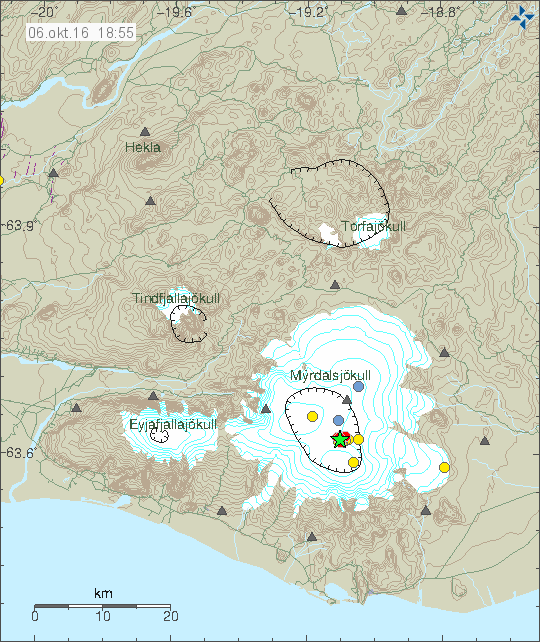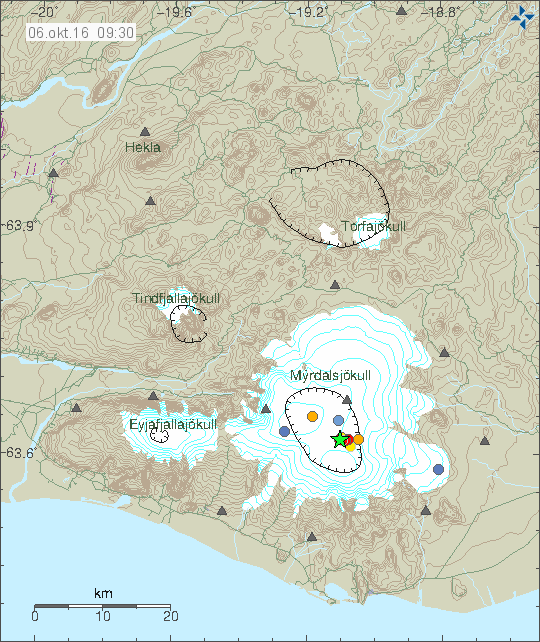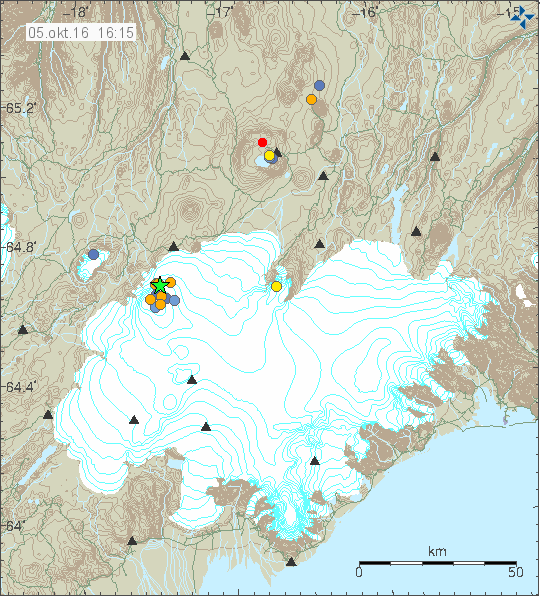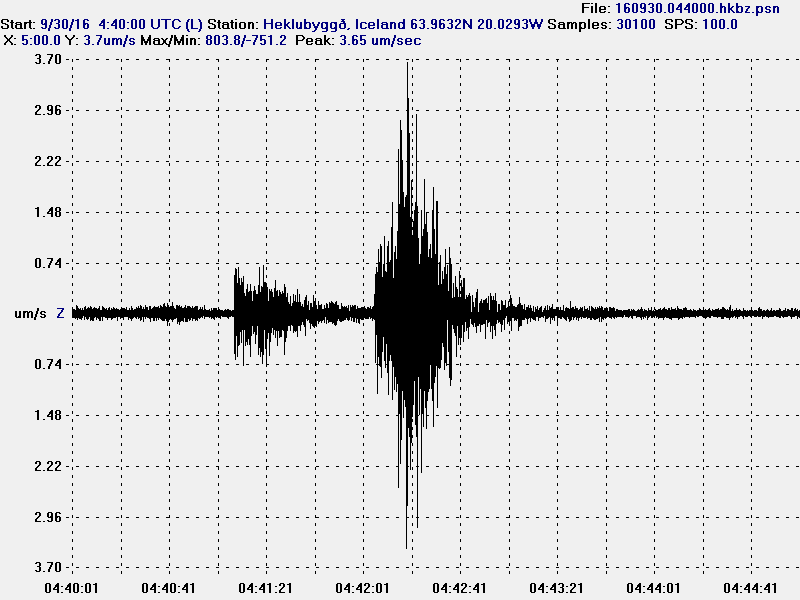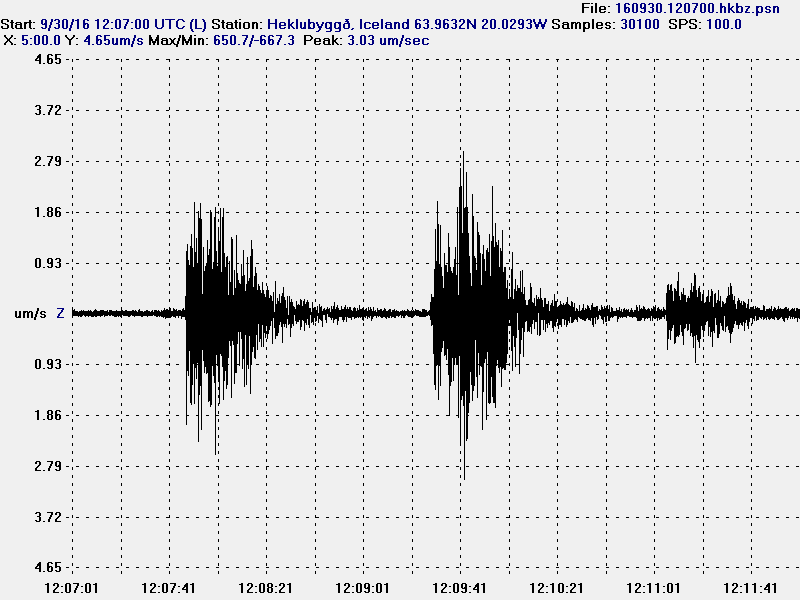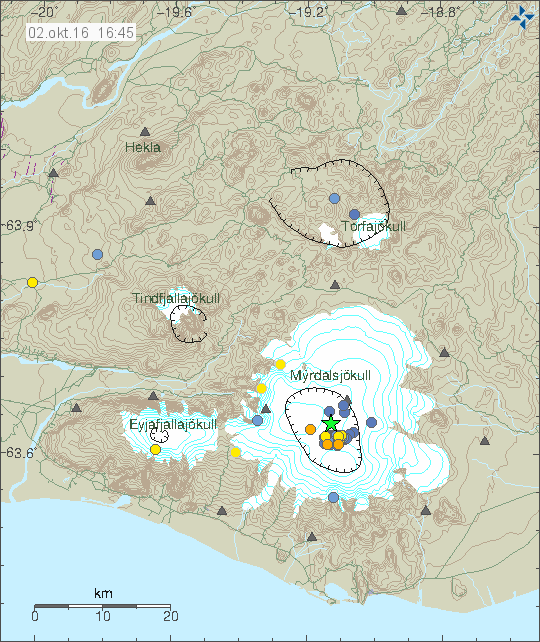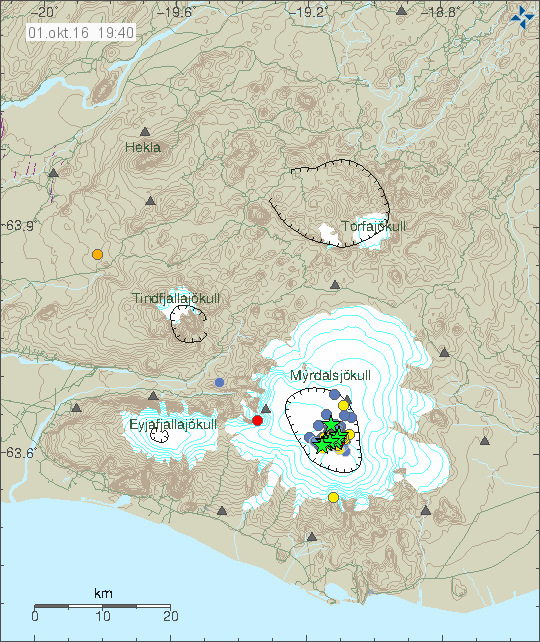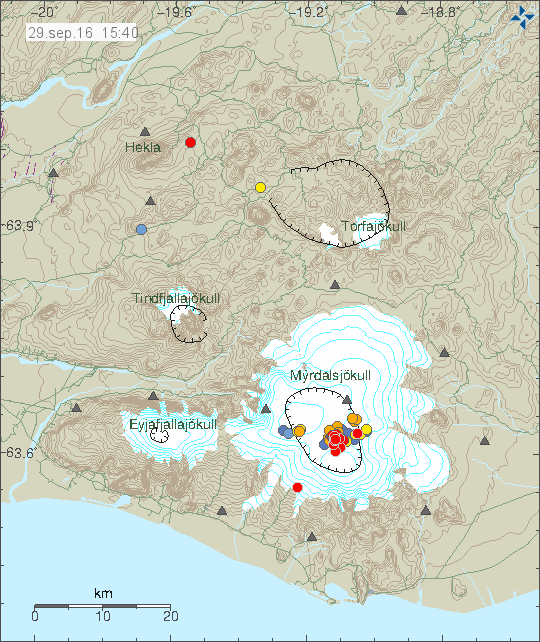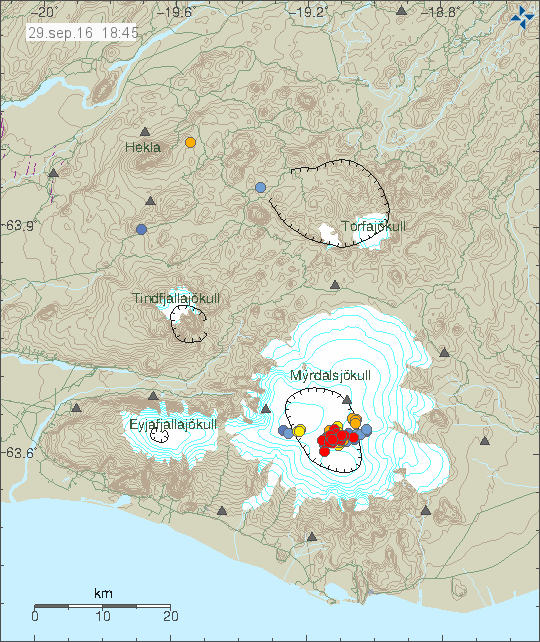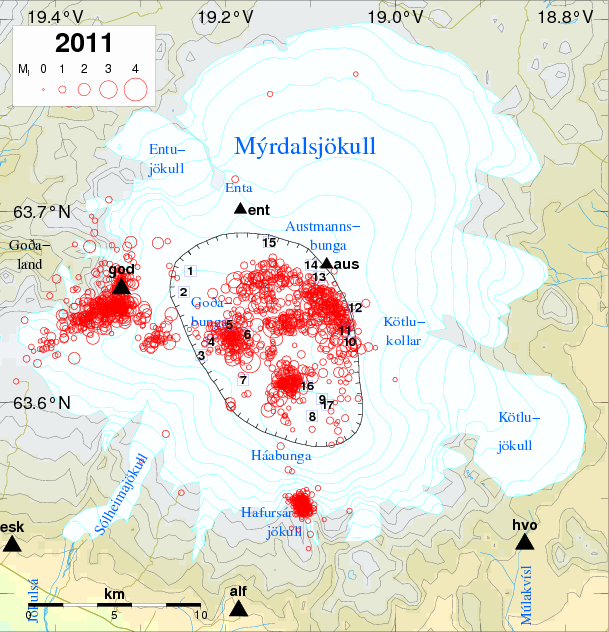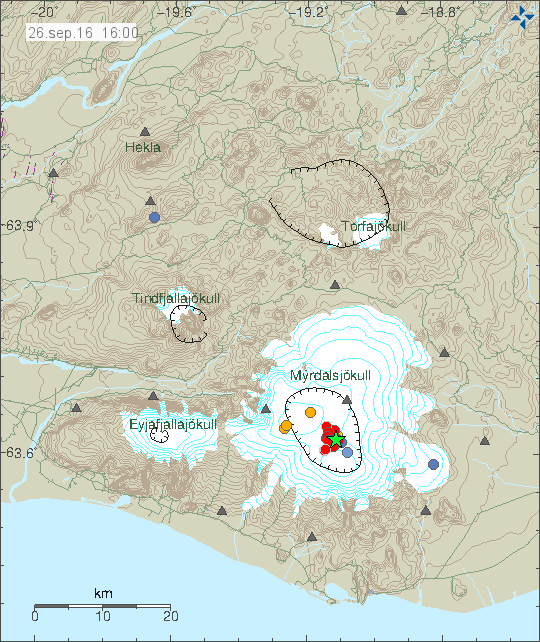This article is going to be updated as needed today (30-September-2016).
During the last 48 hours total of 261 earthquake has happened in Katla volcano when this is written. Largest earthquakes during the last 24 hours have the magnitude of 3,1 and 3,2. The largest earthquake had the magnitude of 3,6. Since there is no eruption currently there has not been any change in the harmonic tremor.
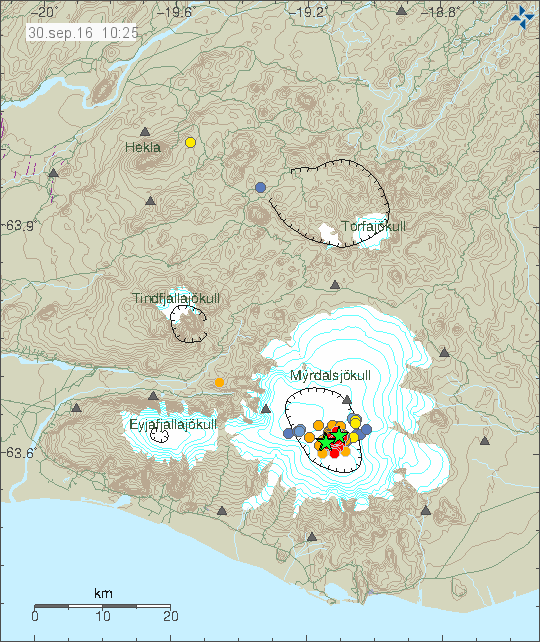
The earthquake activity in Katla volcano. Copyright of this image belongs to Icelandic Met Office.
The current earthquake activity started in end of August with the magnitude 4,5 and 4,6 earthquake activity. After doing a short review of the earthquake during this period I did see it. During this period the earthquake activity has been constant, but at lower lever then it is currently. There is now in my view a good chance that this is going to end in a eruption. It might not happen, but the odds are less in that outcome at the moment. Earthquake activity is pulsating, I don’t know why that happens. Same pattern was seen in Bárðarbunga volcano last year when magma was pushing it self through the crust until an eruption started. Currently the alert status for Katla volcano is green. Information can be found here.
Next update is going to be a few hours or soon as something interesting happens.
Update at 12:42 UTC
Colour code for Katla volcano has been upgraded to Yellow. Map can be found here.
Update at 15:35 UTC
When this is written the activity in Katla volcano has quieted down a little. This has happened several times during the last 48 hours so it might not mean anything. Large earthquakes happened at 12:07, a magnitude 3,6 and at 12:09 a magnitude 3,6. Earthquakes at 12:10 and 12:13 UTC where both magnitude 3,2. Some of the largest earthquakes have been felt in nearby populated areas (farms, not felt in Vík í Mýrdal far as I know). No harmonic tremor has been detected and that means an eruption has not yet started.

Green stars show the earthquakes with magnitude above 3,0 in Katla volcano. Copyright of this image belongs to Icelandic Met Office.
The current earthquake activity is now showing up in a area that has the direction North-East and South-West. Suggesting that magma might break up in a fissure at this location if it can break up trough the crust. The other possibility is always that this just stops and nothing more happens. I’m not sure if that is going to be the result now.
Update at 19:06 UTC
Uncertainty level has been declared for Katla volcano and nearby area.
Update at 23:06 UTC
The road to Sólheimajökull glacier has been closed by the police until the current situation is over in Katla volcano. Currently the rate of earthquakes is low but earthquakes do continue to happen in the same area as before.
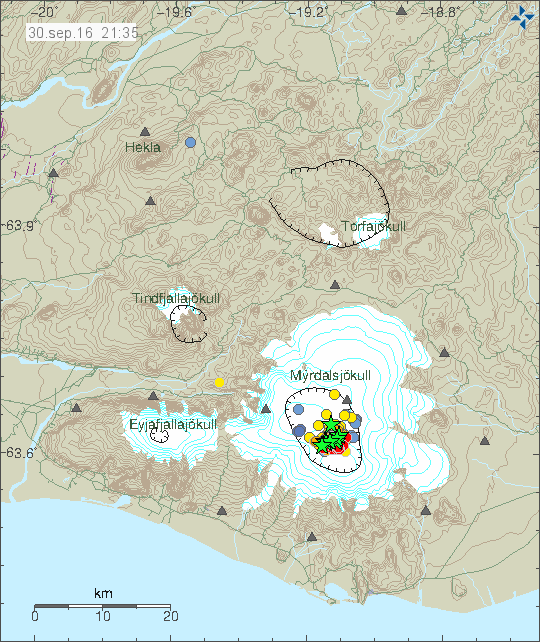
The earthquake activity in Katla volcano. Green stars are earthquakes with magnitude above 3,0. Copyright of this image belongs to Icelandic Met Office.
While the activity has slowed down the for moment I don’t think this is over, at least not until the earthquake activity completely stops for a long period of time. Currently the earthquake activity is back to the levels it was on after the magnitude 4,5 and 4,6 earthquakes on 29-August-2016. It might increase again without warning.
Article updated at 11:00 UTC. Added missing links.
Article updated at 12:42 UTC. Update added.
Article updated at 15:35 UTC. Updated added.
Article updated at 19:06 UTC. Updated added.
